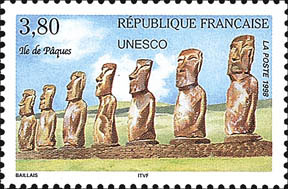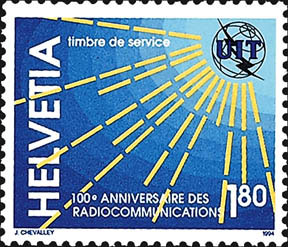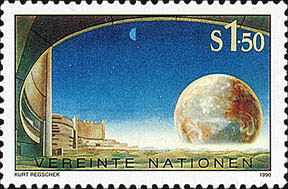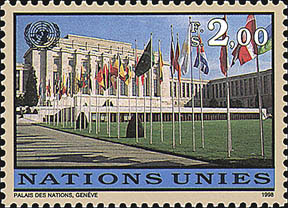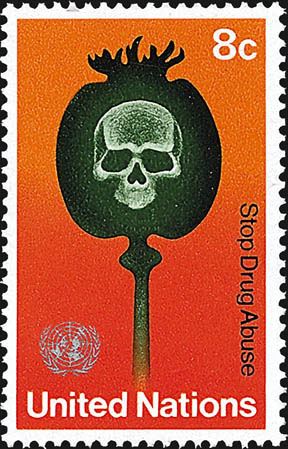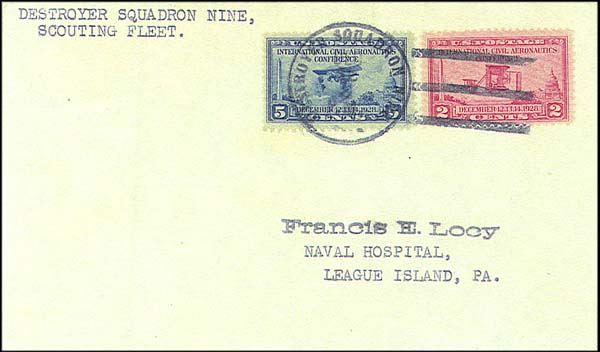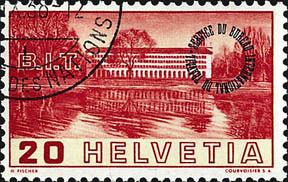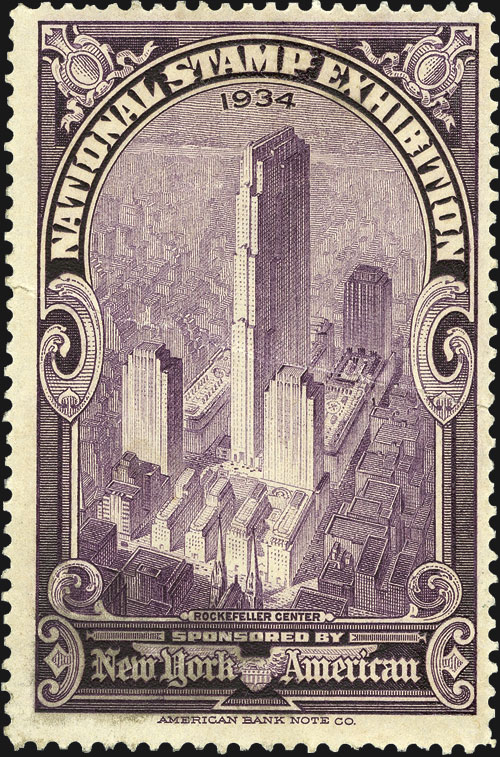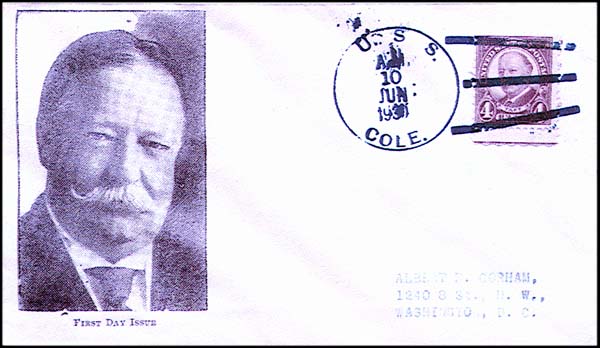POSTAL UPDATES
insights
Collecting stamps issued for use by international organizations
By Janet Klug
Most stamp collectors collect by country or region, or topically. There is another option. Beginning in the 20th century, many stamps have been issued for use by international organizations. The League of Nations was one of the first to have stamps issued for its use.
The League of Nations was founded in 1920 as a result of the Treaty of Versailles, one of the treaties that ended World War I. There were 58 member nations at its apex in 1935.
The League of Nations had the loftiest of goals including disarmament, preventing war through collective security, and settling disputes between countries through negotiation and diplomacy. It failed miserably in its primary objective, with wars raging in Spain, Ethiopia and China in the 1930s, leading up to the general conflagration of World War II, which began on Sept. 1, 1939.
The chief weapon in the League of Nation's arsenal, moral suasion, proved totally inadequate in the face of naked military aggression.
The League of Nations had its headquarters in Geneva, Switzerland. The Palace of the League of Nations is seen on the Swiss 30-centime stamp (Scott 239) shown in Figure 1.
Various Swiss stamps were overprinted for use by the League of Nations, and by its subsidiary, the International Labor Bureau.
The Scott Classic Specialized Catalogue of Stamps and Covers 1840-1940 and the Scott Standard Postage Stamp Catalogue list these as Swiss Official stamps.
A Swiss 1938 3-franc First Federal Pact stamp overprinted "Societe des Nations" (Scott 2O65, issued in 1939) is shown in Figure 2.
That Scott number is a "2" and a capital letter "O" (for Official) followed by 65.
A Swiss 1938 20c View of Labor Building stamp overprinted "Service de Bureau International du Travail" (Scott 3O53, issued in 1938) is shown in Figure 3.
With WWII raging, the League of Nations adjourned Dec. 14, 1939, and did not reconvene until April 1946, for the purpose of dissolving the organization.
The League of Nations was succeeded by the United Nations. Initially the United Nations comprised the Allied nations fighting against the Axis powers in WWII.
The U.N. Conference on International Organization was held beginning April 25, 1945, in San Francisco, Calif. The charter was signed by the 50 original members on June 26 of that year.
Today the U.N. has 192 member states. The headquarters was established in New York City. A United States 33¢ U.N. Headquarters stamp from the 1940s Celebrate the Century pane (Scott 3186k) is shown in Figure 4.
Stamps have been issued for use from the U.N. offices in New York City; Geneva, Switzerland; and Vienna Austria. All are listed following the U.S. listings in the Scott standard catalog, Vol. 1, and in the Scott Specialized Catalogue of United States Stamps and Covers.
U.N. mail is carried by the U.S., Swiss and Austrian postal systems.
U.N./New York stamps are denominated in U.S. currency. A U.N./New York 8¢ Poppy Capsule and Skull stamp (Scott 236) is shown in Figure 5.
U.N./Geneva stamps are denominated in Swiss francs. A 2-franc Palais des Nations, Geneva stamp (Scott 317) is shown in Figure 6.
Stamps issued for the U.N./Vienna were denominated in Austrian schillings until Austria converted to the euro in 2002. They have been denominated in euros since that time. A 1.50s Painting by Kurt Regschek stamp (Scott 98) is shown in Figure 7.
Stamps issued by Switzerland for use by U.N. subsidiaries are listed as Swiss Official stamps in the Scott standard catalog, Vol. 6.
These include stamps for the International Bureau of Labor, the International Bureau of Education, the World Health Organization, the International Organization for Refugees, the European Office of the U.N., the World Meteorological Organization, the International Bureau of the Universal Postal Union, the International Telecommunication Union and the World Intellectual Property Organization.
A Swiss 1994 1.80fr Radio Waves, ITU Emblem Official stamp (Scott 10O15) issued for the International Telecommunication Union is shown in Figure 8.
Stamps issued for UNESCO (the U.N. Educational, Scientific and Cultural Organization) are listed as French Official stamps in the Scott standard catalog. A French 1998 3.80-franc Moai Statues, Easter Island Official stamp (Scott 2O50) is shown in Figure 9.
The Council of Europe, headquartered in Strasbourg, France, was founded in 1949 with the chief aim of European Integration. French stamps issued for mail from the council's headquarters are listed as French Official stamps. A 1977 80-centime New Council of Europe Headquarters, Strasbourg Official stamp (Scott 1O20) is shown in Figure 10.
In addition to these stamps issued for international organizations, there have also been stamps issued by international organizations for national use.
In 1962-63, the U.N. exercised temporary executive authority over Netherlands New Guinea and overprinted the former colony's stamps "UNTEA" for use during that period.
The U.N. administers the Serbian province of Kosovo and has issued stamps for use there since 2000.
Stamps issued in 2000 for the U.N. Transitional Authority in East Timor are listed under Timor in the Scott standard catalog, Vol. 6.
MORE RELATED ARTICLES
Headlines
-
US Stamps
Oct 7, 2024, 3 PMMcMurtrie dismissed as APS education director following Sept. 21 arrest
-
US Stamps
Oct 7, 2024, 12 PMVasiliauskas named president of Mystic Stamp Co.
-
US Stamps
Oct 6, 2024, 5 PMApgar souvenir card available
-
US Stamps
Oct 6, 2024, 4 PMFirst Continental Congress and U.N. stamps receive Scott catalog numbers
